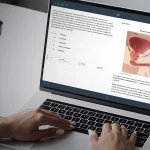Physician Assistant vs. Nurse Practitioner . . . which path should I choose?
For those considering a future in the healthcare industry, this question — PA vs. NP — is one that often arises, and the reason is simple: Physician Assistant (PA) and Nurse Practitioner (NP) are two careers in the healthcare industry that are relatively comparable.
While it is true that there are a number of similarities between the two professions, there are also some unique differences between nurse practitioners and physician assistants. Let’s explore some of those similarities and differences . . .
First of All, What Is a Physician Assistant?
When trying to answer the question “What is a Physician Assistant?” one needs to look no further than the American Academy of Physician Assistants® (AAPA®). They define PAs as:
PAs are medical professionals who diagnose illness, develop and manage treatment plans, prescribe medications, and often serve as a patient’s principal healthcare provider. With thousands of hours of medical training, PAs are versatile and collaborative.
What Is a Nurse Practitioner?
The American Association of Nurse Practitioners® (AANP®) gives a similar definition when answering the question “What is a Nurse Practitioner?” They define nurse practitioners as:
Clinicians that blend clinical expertise in diagnosing and treating health conditions with an added emphasis on disease prevention and health management. NPs bring a comprehensive perspective and personal touch to health care.
Physician Assistant vs. Nurse Practitioner: Similarities in Scope of Practice
The scope of practice differs from state to state, but generally speaking, physician assistants and nurse practitioners both . . .
- Examine patients
- Order, perform and interpret diagnostic tests (e.g., lab work, x-rays, etc.)
- Formulate a diagnosis
- Prescribe medications and other treatments
- Assess and record a patient’s progress
- Educate patients and their families (e.g., disease prevention, healthy lifestyle choices, etc.)
Physician Assistant vs. Nurse Practitioner: Differences in Scope of Practice
Physician assistants are more likely to specialize in a particular area of medical practice, while nurse practitioners most often provide care to specific patient populations such as family care, pediatrics, women’s health or mental health. The differences in their approach to patient care can be attributed to the different PA vs. NP educational trajectory.
Physician Assistant vs. Nurse Practitioner: Differences in Education/Clinical Training
The path of the PA:
The aspiring physician assistant must earn a bachelor’s degree and demonstrate a level of health care experience before being accepted into a PA program. As part of a candidate’s degree, most PA programs require the following prerequisites: chemistry, physiology, anatomy, microbiology, and biology.
In addition to a bachelor’s degree, PA programs want to see that a candidate has several years of experience with patient care. The AAPA gives some examples of hands-on medical experience students can gain:
Medical assistant, emergency medical technician (EMT), paramedic, medic or medical corpsman, Peace Corps volunteer, lab assistant/phlebotomist, emergency room technician, surgical tech, certified nursing assistant (CNA).
After acceptance into an accredited PA program, the aspiring physician assistant must complete the program (approximately two–three years) in order to earn a master’s degree. The first year in a PA program is the didactic (or classroom) year. The remainder of the educational experience is spent in a variety of clinical rotations.
The final step to gain licensure is to take and pass the PANCE exam. Students spend months in PA exam prep in order to succeed on this high-stakes licensure exam.
The path of the NP:
Similar to the level of education a PA must complete, NPs must also earn at least a master’s level degree. This comes from attending an accredited NP program, which can take from two–four years.
Before entering a nursing graduate program, the candidate must earn a Bachelor of Science in Nursing (BSN), pass the NCLEX-RN®, and gain RN experience (most programs require a minimum of two years),
If the candidate is an RN who has an RN diploma or an Associate Degree in Nursing (ADN) instead of a BSN, he or she will need to enroll in an RN-to-BSN bridge program to get the required bachelor’s degree.
When a candidate enters an NP program, they determine the type of patient population in which they wish to practice so that their education matches the knowledge and clinical skills they need to the patients they will be treating.
Upon successfully completing an accredited NP program, the aspiring family nurse practitioner must pass either the ANCC® or the AANP® exam to gain certification.
Both PAs and NPs are required to be nationally certified and state licensed in order to practice.
Physician Assistant vs. Nurse Practitioner: Salary
Salaries vary according to the city and state in which you live, but according to the U.S. Bureau of Labor Statistics, the 2020 median pay for both professions is . . .
Physician Assistant: $115,390
Nurse Practitioner: $117,670
Physician Assistant vs. Nurse Practitioner: Two Great Options
There is really no bad decision when choosing between becoming a physician assistant or a nurse practitioner. Both vocations are rewarding professions that are growing in demand with each new year. Do some research on your own, talk to a practicing PA and a practicing NP, think about what specialties interest you, and make an informed decision that will start you on your journey to becoming a medical professional.
Are you preparing for an upcoming, high-stakes PANCE® or EOR exam? If so, check out UWorld’s comprehensive online learning tool for your didactic, EOR, PANCE, PANRE®, and clinical success. Our challenging questions, in-depth explanations, and performance tracking features will have you ready for success on exam day. Start your FREE trial today.
“what is a pa?”. AAPA. (2021, August 26). Retrieved October 4, 2021, from
https://www.aapa.org/what-is-a-pa/.
What’s a nurse practitioner (NP)? American Association of Nurse Practitioners. (n.d.). Retrieved October 4, 2021, from
https://www.aanp.org/about/all-about-nps/whats-a-nurse-practitioner.
U.S. Bureau of Labor Statistics. (2021, September 8). Physician assistants : Occupational Outlook Handbook. U.S. Bureau of Labor Statistics. Retrieved October 4, 2021, from
https://www.bls.gov/ooh/healthcare/physician-assistants.htm#tab-2.
Become a PA. AAPA. (2021, January 27). Retrieved October 4, 2021, from
https://www.aapa.org/career-central/become-a-pa/.
U.S. Bureau of Labor Statistics. (2021, September 8). Physician assistants : Occupational Outlook Handbook. U.S. Bureau of Labor Statistics. Retrieved October 4, 2021, from
https://www.bls.gov/ooh/healthcare/physician-assistants.htm#tab-1.
U.S. Bureau of Labor Statistics. (2021, September 8). Nurse anesthetists, nurse midwives, and Nurse Practitioners : Occupational Outlook Handbook. U.S. Bureau of Labor Statistics. Retrieved October 4, 2021, from
https://www.bls.gov/ooh/healthcare/nurse-anesthetists-nurse-midwives-and-nurse-practitioners.htm.




